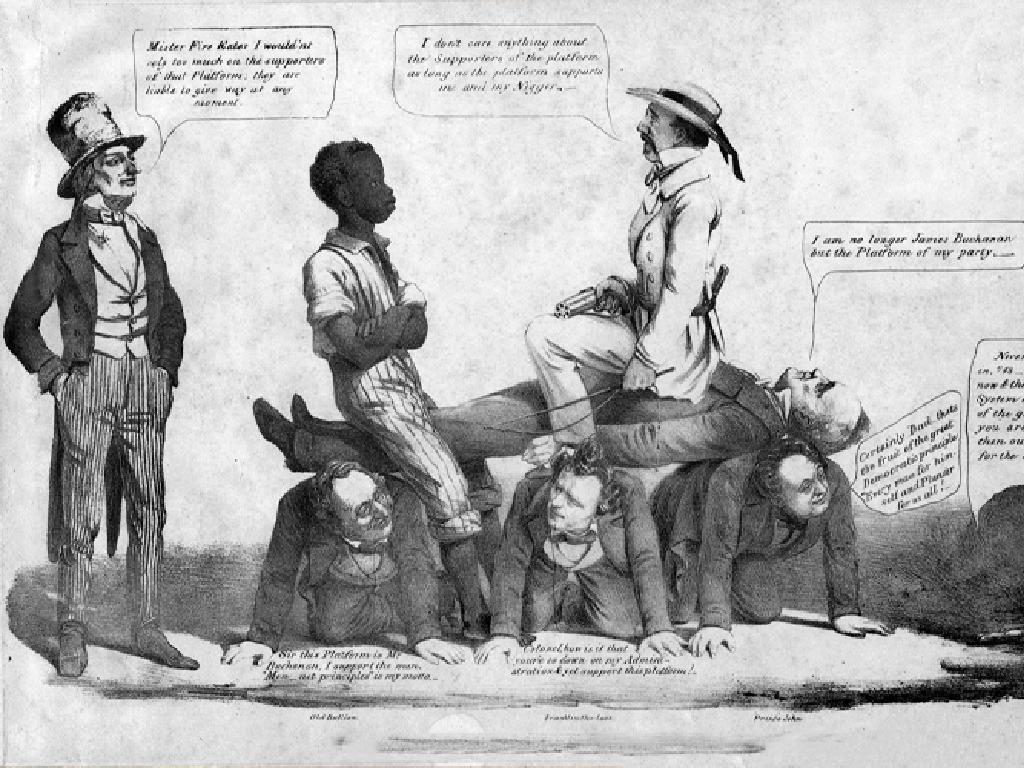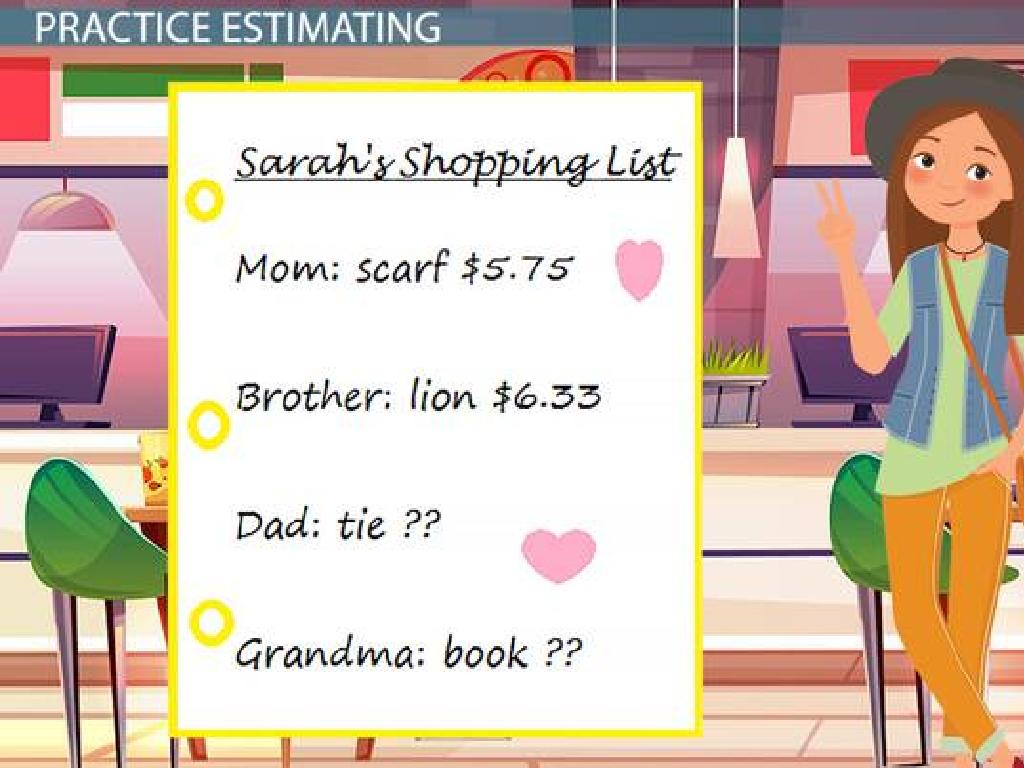Choose The Short I Sentence That Matches The Picture
Subject: Language arts
Grade: First grade
Topic: Short I
Please LOG IN to download the presentation. Access is available to registered users only.
View More Content
Introduction to Short ‘i’ Sound
– Learn about the short ‘i’ sound
– ‘i’ as in ‘fish’, ‘pig’, ‘pin’
– Examples: ‘sit’, ‘hit’, ‘lip’
– Practice finding the short ‘i’
– We’ll spot the short ‘i’ in different words
– Listen and repeat exercises
– We’ll say words together as a class
|
This slide introduces the short ‘i’ sound to first graders, which is a fundamental concept in phonics. Start by explaining the sound and providing clear examples such as ‘fish’, ‘pig’, and ‘pin’. Use visual aids or actual objects if possible to help students associate the sound with the words. Engage the class in practice exercises where they identify the short ‘i’ sound in various words. Incorporate listening and repeating activities to reinforce their learning. Make sure to articulate the sound clearly and encourage students to mimic the pronunciation. This will serve as a foundation for reading and spelling activities involving the short ‘i’ sound.
Recognizing Short ‘i’ Sound
– Learn the short ‘i’ vowel sound
– It sounds like the ‘i’ in ‘fish’ and ‘sit’
– Hearing and speaking short ‘i’
– We’ll listen to words with the short ‘i’ and repeat them
– Practice saying the short ‘i’
– Everyone will say the short ‘i’ sound as a group
|
This slide is aimed at helping first graders recognize and practice the short ‘i’ sound, which is common in many words they will encounter. Start by explaining what a vowel sound is and then focus on the short ‘i’ sound specifically. Use examples like ‘fish’ and ‘sit’ to illustrate the sound. Engage the class by listening to the short ‘i’ sound in different words and then repeating them together. Conduct a group activity where all students say the short ‘i’ sound in unison to reinforce their learning. Make sure to correct pronunciation as needed and encourage students to practice at home with their families.
Matching Words to Pictures with Short ‘i’
– Match sentences to pictures
– Find the short ‘i’ sound
– Words like ‘fish’, ‘sit’, ‘lip’ have the short ‘i’ sound
– Look and listen for clues
– Use the picture to help figure out the word
– Choose the correct sentence
|
This slide is designed for a class activity where students will practice their phonemic awareness by matching sentences to corresponding pictures. Each sentence will contain a word with the short ‘i’ sound, such as ‘fish’, ‘sit’, or ‘lip’. Encourage the students to look at the picture for visual clues and listen carefully as the sentence is read aloud. This will help them make the connection between the spoken word and the visual representation. For the activity, prepare several pictures and corresponding sentences. Make sure to include a variety of words with the short ‘i’ sound to help students recognize the sound in different contexts. During the next class, review the matches as a group to reinforce learning.
Practice Time: Matching Pictures & Sentences
– Look at the picture carefully
– Choose the sentence with short ‘i’
– Sentences like ‘The fish is in the dish’ have the short ‘i’ sound
– Listen for the ‘i’ sound in words
– Practice makes perfect
|
This slide is for a class activity where students will practice identifying the short ‘i’ sound in sentences that match pictures they are shown. Display a picture and provide a few sentences, only one of which contains the short ‘i’ sound that matches the picture. Encourage the students to say the sentences out loud and listen for the short ‘i’ sound. Correctly identifying the sound helps them choose the sentence that describes the picture. For example, if the picture is of a fish in a dish, the correct sentence would be ‘The fish is in the dish.’ Repeat this activity with different pictures to reinforce the concept. This exercise will help students with phonemic awareness and reading comprehension.
Let’s Play a Game with Short ‘i’!
– We’re playing a matching game
– Match pictures to short ‘i’ sentences
– Find the sentence that describes the picture using the short ‘i’ sound like in ‘fish’
– Listen for the short ‘i’ sound
– Get ready for fun learning!
|
This slide introduces a fun and interactive game to help first graders recognize and understand the short ‘i’ sound in words. The activity involves matching sentences that contain the short ‘i’ sound with corresponding pictures. For example, if there’s a picture of a fish, the matching sentence could be ‘The fish is in the pond.’ Prepare several pictures and corresponding sentences with the short ‘i’ sound for the activity. Make sure to articulate the short ‘i’ sound clearly during the demonstration and encourage the students to repeat after you. This will help them identify the sound when they hear it in words. The goal is to make learning phonics enjoyable through a hands-on matching game.
Class Activity: Short ‘i’ Bingo
– We’re playing Bingo with short ‘i’ words
– Listen for words and mark the pictures
– Get five in a row to win
– Have fun and learn short ‘i’ sounds
– Examples: ‘fish’, ‘sit’, ‘win’, ‘lip’
|
This slide introduces a fun and interactive Bingo game to help first graders recognize and learn words with the short ‘i’ sound. Prepare Bingo cards in advance with pictures representing short ‘i’ words. During the activity, call out words with the short ‘i’ sound and instruct students to mark the corresponding picture on their cards. The goal is to get five marked pictures in a row, either horizontally, vertically, or diagonally. The first student to achieve this calls out ‘Bingo!’ and wins. This game encourages listening skills, word recognition, and provides a hands-on approach to learning phonics. Possible variations of the game can include using different patterns for winning or playing in small groups. Ensure that all students understand the rules and the sounds of the words before starting the game.






